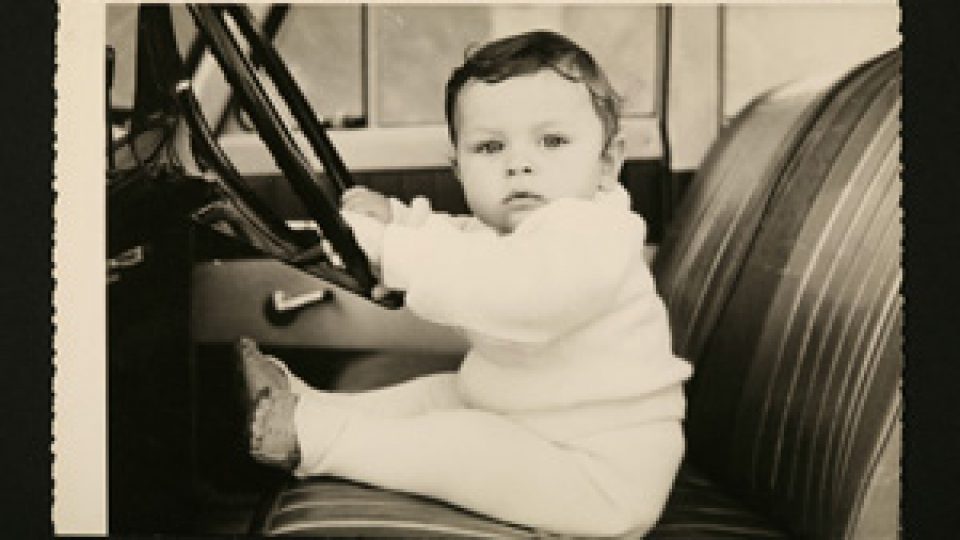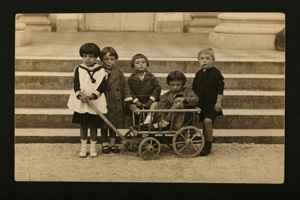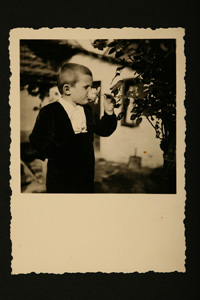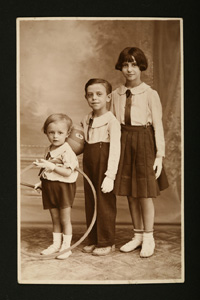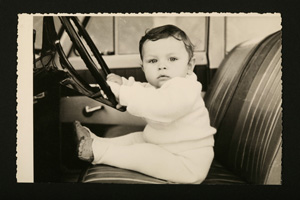Exhibition curator: Slobodan Jovanović, Curator, Department of Contemporary Applied Arts
It is an intimate wish of Perić that his complete collection became housed and displayed by 2016 when the project is expected to be ended. At the exhibition The Photo Archive of the Museum of Childhood at the Museum of Applied Art Perić takes over old photographs by incorporating them into installations and video works. Thus he enables forgotten objects to be re-produced as parts of works of art.
Using ready-made procedures, that is construing works of art out of photographs taken mostly by anonymous authors, Perić places them within the institutional museological frame of the Museum of Applied Art. Art museums are conceived as institutions which collect, process, file away and display works of art. Each museum item has individual history of ownership though it is of lesser significance than the cultural-artistic-historic value of the object itself. Objects used in installations of Vladimir Perić represent part of the history of people who collected them, kept them and later discarded or sold them. The Photo Archive of the Museum of Childhood consists of photographs which were part of lives of their owners but in the same time they are representations of their lives.
Perić takes over these photographs applying classical photographic method of work however in a surrealistic manner. In the exhibition catalogue, the author of the text Slobodan Jovanović, the curator says: “Personal photographs enable remembering of the past events. The photographic process gives importance to an event as it continues its life through the existence of the photograph. The ownership of these photographs does not imply returning the past but offers opportunity to own a document that the event had happened and that it was important enough to be recorded by a photograph. With the time passing these photographs lose their importance or are simply cast away. Some of them can later be found in refuse containers, at flea markets and in antiquity shops. There they wait until Vladimir Perić finds them. His surrealistic method in collecting discarded objects gives life to his famous installations. Since these objects have already been in use Perić considers it important that there are changes to the objects which testify to the lives of their previous owners. If for Breton gong to a flea market meant a moment of “aesthetic pilgrimage” for Perić this is the only way of functioning in a world full of discarded objects and ideas.”
Vladimir Perić (1962) studied graphics and photography at the Faculty of Applied Arts and Design in Belgrade. He staged solo exhibitions and took part in collective exhibitions both under his pseudonym Talent and as member of the Talent Factory Group. He published his works in the following magazines: Domus, How, Graphics International, Blue, European Photography, Kvadart, Eterna, Reč, New Moment, Remont Art Magazine… and in books: Carson, D., 2ndinsight – Graphic Design After the End of Print (Laurence King Publishing); Heller, S. & Ilic, M., Icons of Graphic Design (Thames & Hudson)…
In January 2006 his exhibition Made in Yugoslavia held in Chaos Gallery, Belgrade was awarded by the daily Politika’s Vladimir Ribnikar Fund prize.

